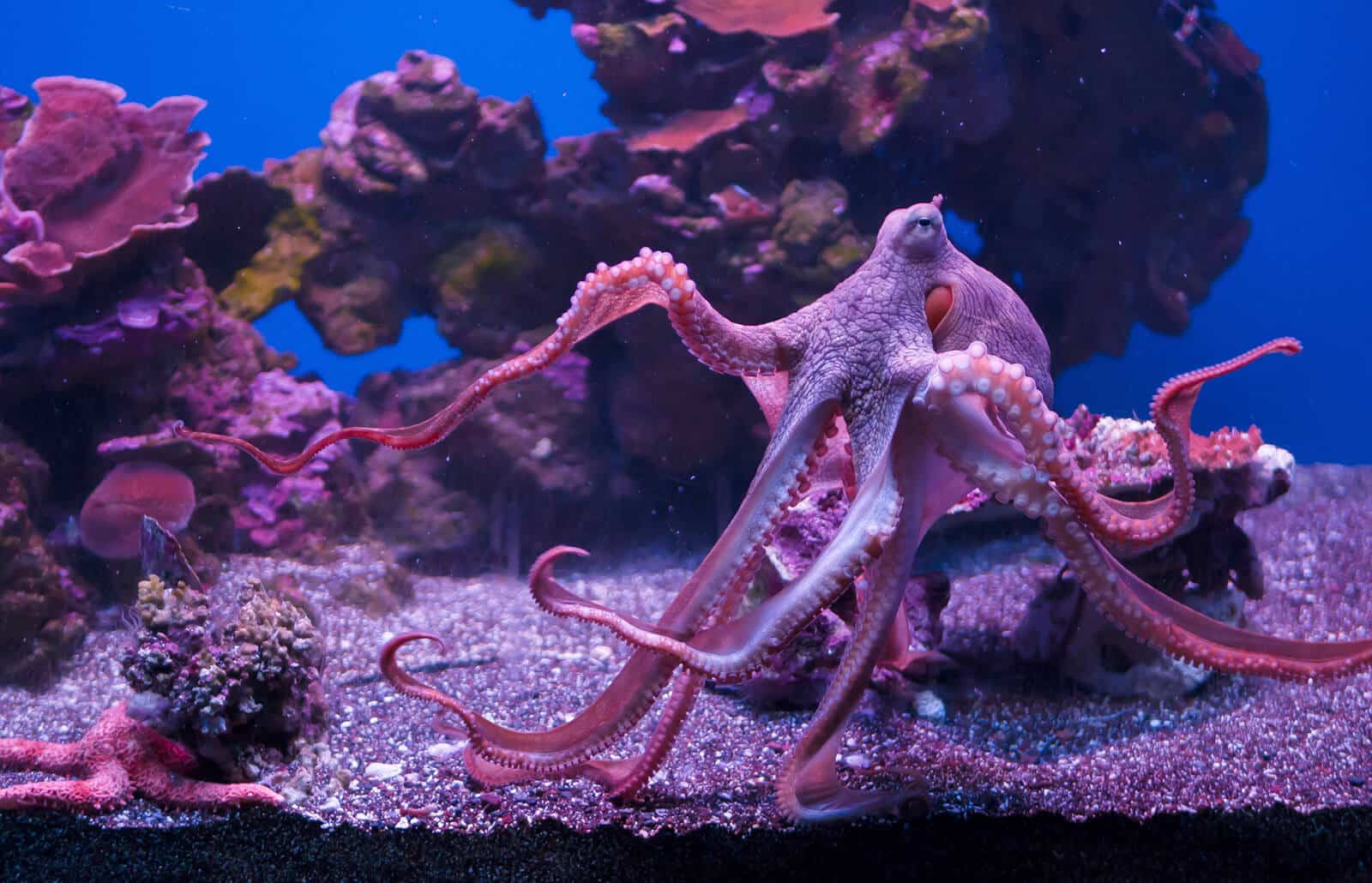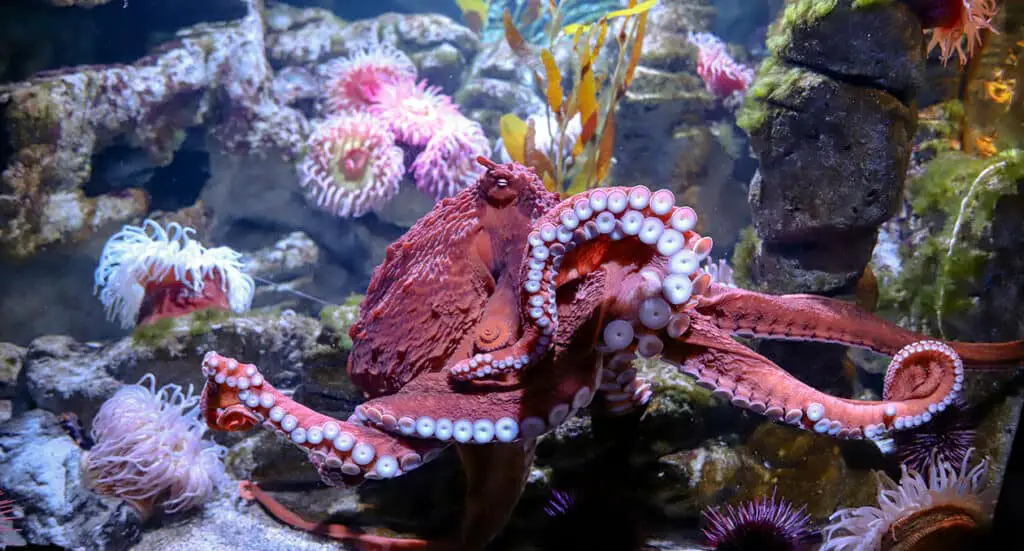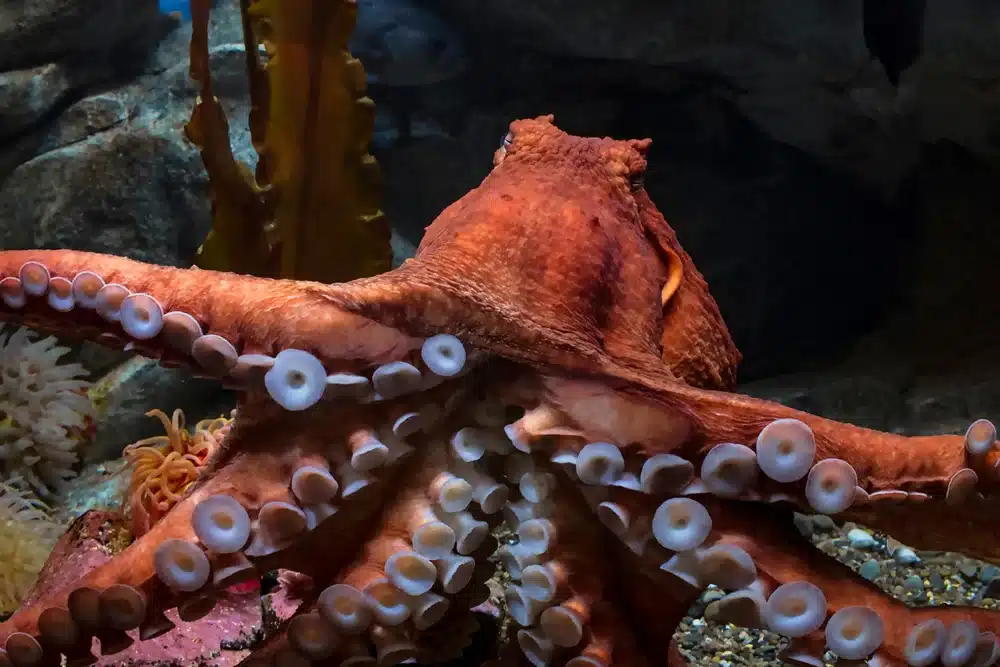Does Octopus Shed Skin

Introduction
Does Octopus Shed Skin: Octopuses, those enigmatic and highly intelligent denizens of the deep, captivate our imagination with their astonishing abilities and intriguing behaviors. One such fascinating phenomenon in the world of octopuses is the shedding of their skin.
In the animal kingdom, molting or shedding old skin is a common process seen in various creatures, including snakes, insects, and crustaceans. Octopuses, belonging to the cephalopod class of marine animals, follow a similar routine. However, their skin shedding is a unique and complex process, reflective of their remarkable adaptability and growth.
Octopuses don’t have an outer shell like crustaceans or a rigid skeleton like vertebrates. Instead, they rely on their soft and flexible bodies, equipped with an array of color-changing pigments and textures to camouflage, communicate, and evade predators. Their skin plays a pivotal role in these functions.
Throughout an octopus’s life, it experiences several growth stages, during which its skin must adapt to its changing size and requirements. To achieve this, octopuses periodically shed their outer layer, revealing a fresh, vibrant skin beneath. This process not only allows for growth but also helps remove parasites and accumulated debris.
In this exploration of octopus skin shedding, we will delve into the intricate details of this phenomenon, uncovering the science behind it, and gaining a deeper appreciation for these masters of disguise that inhabit the mysterious depths of our oceans. Join us as we embark on a journey to understand the hidden world of octopuses and their incredible ability to shed their skin.

Do octopuses have hard skin?
Unlike other species, octopuses don’t have a hard shell or sharp spines to protect themselves, so camouflage is their best bet for avoiding hungry predators. By using their chromatophores and changing the texture of their skin (yes, they can do that too!) octopuses can seamlessly blend into rocks, corals and sponges.
Octopuses are known for their soft and pliable skin, lacking the hard external structures like shells or scales found in many other marine creatures. Their skin is incredibly flexible and versatile, enabling them to squeeze through tight spaces, camouflage seamlessly with their surroundings, and communicate through intricate color and texture changes.
Octopuses have a unique skin composition that includes a dense network of muscle fibers, allowing them to change the texture and shape of their skin at will. This incredible ability not only aids in their camouflage but also helps in hunting and evading predators. They can mimic the textures of rocks, corals, and even other animals, making them nearly invisible in their underwater habitats.
While octopuses lack the hard protection seen in some aquatic species, their soft skin is a testament to their adaptability and intelligence. It serves as a dynamic canvas for communication, a tool for survival, and a symbol of their mastery in navigating the complex and ever-changing world of the ocean. So, in contrast to hard-shelled creatures, octopuses possess a skin that is both their greatest asset and an embodiment of their remarkable capabilities in the underwater realm.
Is octopus skin soft?
Cephalopod skin is a soft organ that can endure complex deformations, such as expanding, contracting, bending and twisting. It also possesses cognitive sense-and-respond functions that enable the skin to sense light, react and camouflage its wearer.
Octopus skin is indeed soft, and it stands in stark contrast to the hard and rigid exteriors of many other marine animals. Octopuses belong to a group of marine creatures known as cephalopods, which includes squids and cuttlefish. Unlike animals with exoskeletons or shells, octopuses lack these external protective structures.
Octopus skin is incredibly soft, pliable, and highly adaptable. It consists of a complex network of muscle fibers, pigments, and sensory cells. This unique combination allows octopuses to change the color, texture, and even the shape of their skin on demand. This remarkable ability serves multiple purposes in their underwater world.
One of the primary functions of their soft skin is camouflage. Octopuses are masters of disguise, and their skin plays a pivotal role in helping them blend seamlessly with their surroundings, making them virtually invisible to predators and prey alike. Additionally, their skin serves as a sensory organ, helping them detect and respond to changes in their environment.
Octopus skin is a dynamic and versatile tool that enables these intelligent creatures to thrive in the complex and ever-changing underwater ecosystems they call home. Its softness is a key aspect of their adaptability, and it underscores the incredible capabilities of these cephalopods in the realm of marine biology.
Is it safe to eat octopus skin?
Although the skin and suckers are edible, some people choose to remove them through a process called peeling as these parts can be very chewy and hard to eat.
Octopus skin is generally considered safe to eat, and it is a common component in various culinary dishes around the world. When prepared properly, octopus skin can be tender and flavorful. However, there are some considerations to keep in mind:
Cooking Method: The key to making octopus skin palatable is proper cooking. Octopus skin can be tough if not cooked correctly, so it is often boiled or simmered to tenderize it. It can also be grilled, fried, or incorporated into stews and soups.
Cleaning: Octopus skin should be thoroughly cleaned before cooking to remove any residual ink, slime, or sand that may be present. This helps improve the taste and texture of the dish.
Culinary Uses: Octopus skin is commonly used in various dishes such as sushi (in the form of “tako” nigiri), salads, and Mediterranean cuisine. It is appreciated for its unique texture and flavor.
Allergies and Preferences: As with any food, individual preferences and allergies should be considered. Some people may have allergies to seafood, including octopus, so caution is advised. Additionally, some may find the texture of octopus skin unusual or off-putting.
Octopus skin is safe to eat when properly prepared and cooked. It offers a distinctive texture and flavor that can be a delightful addition to a variety of dishes, but personal tastes and dietary considerations should always be taken into account.
Should you eat octopus skin?
The skin of an octopus is one of the tastiest parts of the dish. While some people choose to remove the purple skin after cooking octopus, it is optional. Octopus skin can take on a variety of textures, flavors, and cooking styles so it is oftentimes used to enhance the complexities of any dish you add it to.
Eating octopus skin is a matter of personal preference and cultural tradition. It is safe to consume when prepared correctly, but whether you should eat it depends on your taste preferences and dietary choices.
Octopus skin has a unique texture that can be somewhat rubbery or chewy, which some people find enjoyable in dishes like sushi or salads. It can add an interesting textural element to a meal and absorb flavors from accompanying ingredients. However, others may find the texture unappealing or unfamiliar, as it differs significantly from more common seafood options.
Culturally, octopus skin is a staple in some cuisines, like Japanese and Mediterranean, where it is appreciated for its taste and versatility. In these regions, it is considered a delicacy and is prepared in various ways to highlight its culinary potential.
Ultimately, whether you should eat octopus skin comes down to your personal taste preferences and dietary choices. If you’re curious about trying it, consider starting with dishes prepared by experienced chefs who can bring out the best qualities of octopus skin. If you enjoy unique textures and flavors, you might discover a new culinary delight in octopus skin.
Why does octopus shed skin?
Similar to crustaceans shedding their exoskeletons as they grow (or even humans shedding skin cells), octopuses like Bowie will shed their “disks,” or the outside skin of their suckers—Bowie will make these mesmerizing movements around shedding time.
Octopuses shed their skin for several crucial reasons. This natural process, known as molting or exuviation, is essential for their growth, health, and overall survival.
- Growth: Just like many other animals, octopuses grow throughout their lives. To accommodate their increasing size, they need to periodically shed their old, tight-fitting skin and replace it with a larger one. This allows them to continue thriving in their ever-changing marine environment.
- Skin Renewal: Octopus skin isn’t just about protection; it plays a vital role in their sensory perception, camouflage, and communication. Over time, the skin accumulates damage, parasites, and debris. Shedding the old skin enables octopuses to refresh their skin, ensuring it remains in optimal condition for their survival needs.
- Parasite Removal: The shedding process helps octopuses get rid of unwanted hitchhikers, such as parasites or epibionts, which might attach themselves to their skin. By shedding their old skin, octopuses can effectively remove these unwanted guests and maintain their health.
- Hygiene: Regularly shedding their skin also promotes overall hygiene by preventing the buildup of harmful bacteria and pathogens that may pose a threat to the octopus’s health.
Octopuses shed their skin as a means of growth, renewal, hygiene, and self-maintenance. This natural process is a testament to their adaptability and survival instincts, allowing them to thrive in the dynamic and challenging underwater ecosystems they call home.
Why do octopuses change their skin color and texture?
Octopuses possess a mesmerizing ability to change the color and texture of their skin, a phenomenon known as chromatophores and papillae. This remarkable adaptation serves several crucial purposes in their underwater world.
- Camouflage: Octopuses are masters of disguise. They use their color-changing abilities to blend seamlessly with their surroundings, making them virtually invisible to predators and prey alike. By mimicking the colors and textures of their environment, they can evade danger and approach potential meals undetected.
- Communication: Octopuses are solitary creatures, and they use their changing skin patterns to communicate with one another. They can convey their mood, aggression, or even readiness to mate through a dazzling array of color and texture changes.
- Hunting: When hunting, octopuses employ their skin-changing skills to mesmerize prey. They create hypnotic patterns to lull their victims into a false sense of security before striking with lightning speed.
- Thermoregulation: In cold or warm waters, octopuses can adjust their skin to either absorb or reflect sunlight, helping them regulate their body temperature effectively.
- Emotion and Stress: Octopuses may also change their skin color and texture in response to emotional states or stress. This can include turning white or pale when frightened or darkening when agitated.
Octopuses change their skin color and texture as a multifaceted survival tool. This extraordinary ability enhances their chances of survival by allowing them to hide, communicate, hunt, regulate body temperature, and express their emotions in the ever-changing and often treacherous underwater environment they call home.
Do octopuses molt like some other aquatic creatures?
Octopuses do undergo a molting process, although it differs from that of many other aquatic creatures. Molting is the shedding of their external protective layer, called the exoskeleton or cuticle, which allows them to grow and replace damaged tissue. However, octopuses are not crustaceans like crabs or lobsters, which have hard exoskeletons.
Octopuses have a soft body with a muscly mantle, and their “shell” is primarily internal, composed of a hard, beak-like structure and a feather-like structure called the pen. Instead of molting their entire outer covering, octopuses molt by shedding the outer layer of their skin, which is also called the epidermis. This process allows them to regenerate damaged or aging skin and maintain their flexibility.
Molting in octopuses is a critical aspect of their growth and maintenance, enabling them to accommodate their increasing size and heal wounds. During the molting process, an octopus will often seek a safe hiding spot to protect itself while its new skin forms and hardens. This shedding of skin is crucial for their survival and adaptation to changing conditions in their aquatic environments, even though it differs significantly from the more familiar molting processes seen in other marine creatures.
Are there any other animals related to octopuses that shed their skin?
Octopuses belong to a group of marine animals called cephalopods, which includes creatures like squid and cuttlefish. While these relatives of octopuses don’t shed their skin in the same way as reptiles or arthropods, they do have their own unique mechanisms for adapting and growing.
Squid, for example, undergo a process called “ecdysis,” which involves shedding their outer layer, including their beaks and some other structures. This process allows them to replace worn or damaged parts and grow larger. However, it’s not exactly the same as the skin-shedding seen in octopuses, as the structures involved are different.
Cuttlefish, another close relative, have a cuttlebone, an internal calcified structure. They can regulate its buoyancy and maintain their position in the water column. As cuttlefish grow, they deposit layers on this bone, effectively allowing them to adapt to changes in size and weight.
So, while octopuses have a unique skin-shedding process within the cephalopod family, their relatives, such as squid and cuttlefish, have their own distinctive methods for growth and adaptation, reflecting the diverse evolutionary strategies within this group of fascinating marine creatures.

Conclusion
The shedding of skin in octopuses is a remarkable and essential aspect of their life cycle. This intricate process, driven by the need for growth and adaptation, showcases the extraordinary nature of these enigmatic creatures.
Through our exploration, we have unraveled the science behind octopus skin shedding, understanding how it facilitates not only growth but also serves as a cleansing mechanism, removing parasites and debris. The flexibility and adaptability of octopus skin, equipped with pigments and textures for communication and camouflage, exemplify the marvels of nature’s design.
Octopuses’ ability to shed their skin is not merely a biological necessity; it is a testament to their survival and mastery of their underwater world. It highlights their innate capacity to thrive in an ever-changing environment, offering insights into their resilience and evolutionary success.
This fascinating phenomenon reminds us of the intricate web of life in our oceans, where even the seemingly mundane processes like skin shedding are a testament to the beauty and complexity of marine ecosystems. As we continue to explore and understand the world beneath the waves, octopuses remain a symbol of nature’s ingenuity, leaving us in awe of their ability to adapt, grow, and thrive in the depths of the sea.



